Big Streamer Fly Fishing: Beyond Banging the Banks
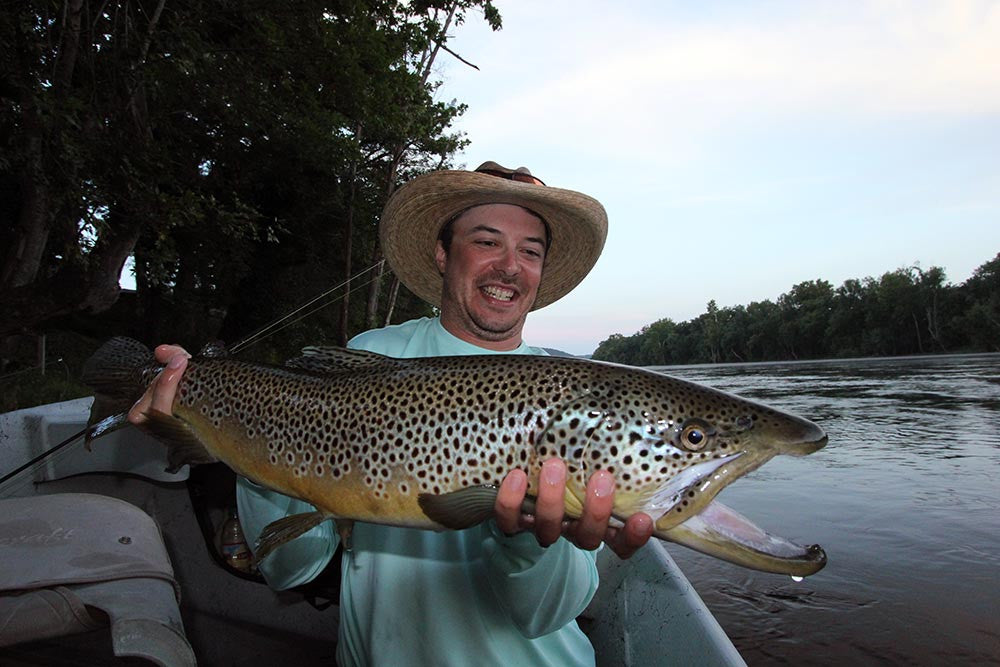
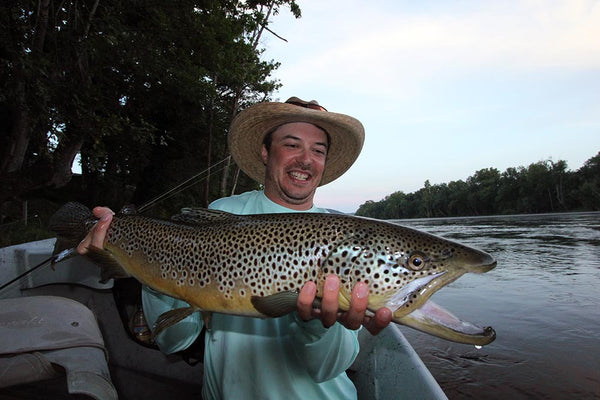
Gabe Levin, 27" White River brown trout.
Big Streamer Fly Fishing Often Gets Labeled as a Young Person’s Game – All Brawn and No Subtlety, Just “Banging the Banks”
Real streamer fishing is visual – from the dance of the fly to the buttery flash of a drive-by – and intellectual – requiring analysis of the flow of current around and over structure to find the honeypots.
Streamer fishing, particularly when the flies are 6” and bigger, is mentally and physically challenging, requiring fast-twitch decision-making and slow-twitch endurance.
Knowing your game, as well as the fish's, is way more important than a booming cast and no brains.
If you want to streamer fish longer and better, here's how.
1. Pay Attention
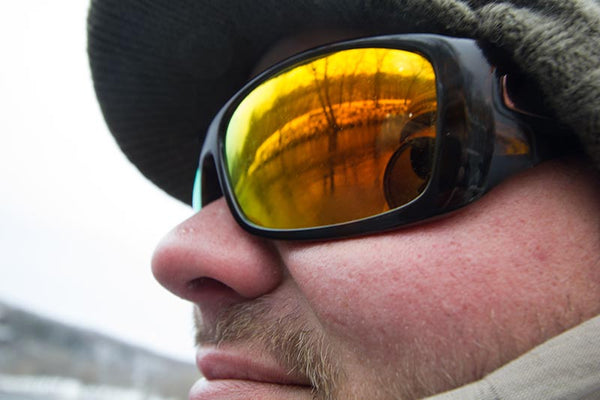
Scanning for the next cast.
The classically oblivious fly angler would be the one mindlessly stripping his sinking line out of the boat, usually in snaggy territory, or telling the rower he's hung up just as the backing knot heads up the guides.
Those two things on the front of your head (most call them eyes) come in pretty handy when you're hucking the big meat.
Paying attention to the fly is important. Very important.
Getting the fly to swim is your job, and the current speed/direction and your stripping motion can mean the difference between your fly working for you or not.
A single blade of grass can kill any action at all.
What separates the real streamer guys is knowing what's coming – structure you can work your fly around, along, or avoid.
They find ledges, humps, potholes, ambush water a hungry brown can use to hide out of the current to await a likely meal, and have their fly swimming correctly when it enters the zone.
5 Signs You Might Be a Streamer Junkie
If you're riding the backseat, look at where the gunner up front is putting his flies so you can pick apart the spots they've missed. Batting cleanup gives you the opportunity to toss into those pockets between log jams or sweepers you can only reach by casting upstream.
Most streamer fishers won’t miss an opportunity to swing a fly tight across the front of a boulder looking to pick off a fish riding the pressure wave. The thinking streamer fisher will do the same thing, but 4 feet upstream of the rock, making sure the fly is in the vision of a 2-foot brown rather than showing it to the trout’s tail.
2. Patience, Grasshopper
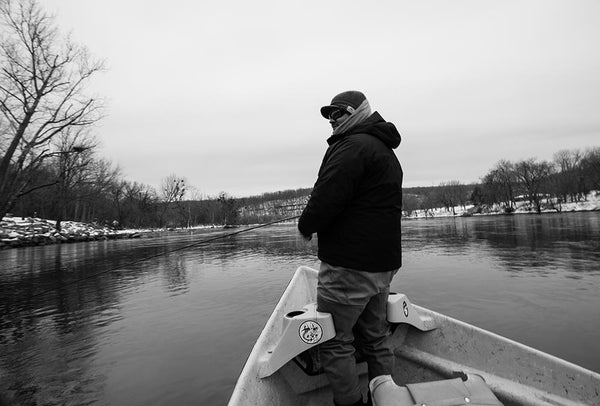
Just cast better.
Bad casts are a waste of time and energy.
Fishing the big meat is a numbers game – working your fly through as many ambush zones as you can, cast after cast after cast.
Missing the target zone means your day with a guide turns into a pleasure cruise without the pleasure.
Ep. 6 | The Flymen Fishing Co. Show w/ Scotty Davis – From Australia to Arkansas With Steve Dally
There’s no bigger sin than continually landing your flies short – fishing shallow over the deep “abyss” rarely pays off.
Generally your flies need to be landing on the shallow or bankside of the structure you're hoping to fish, far enough away that when the flies settle and you get into the strip that the fly is swimming when it leaves cover and crosses into the ambush zone.
Simple and easy to type – now go do it a few thousand times. It's a numbers game, and you need to do it as many times as necessary.
Small Water Fly Fishing: Streamer Design and Tactics
Banks with overhanging trees and log jams tend to bring out the worst in us all. Casting to the outside of the treeline is a rookie move.
But the eager beaver in the gunner’s seat who fires early at the juicy bucket ends up scraping the lip of the bucket, not the way back in there, or worse, hanging up and blowing it for everyone.
Wait until you can make a legitimate cast back to the bank. For tighter pockets this may mean having the fly in the air, carrying a false cast, so you can shoot at the split second you have the angle to get into the right spot.
3. Learn To Cast Backhand
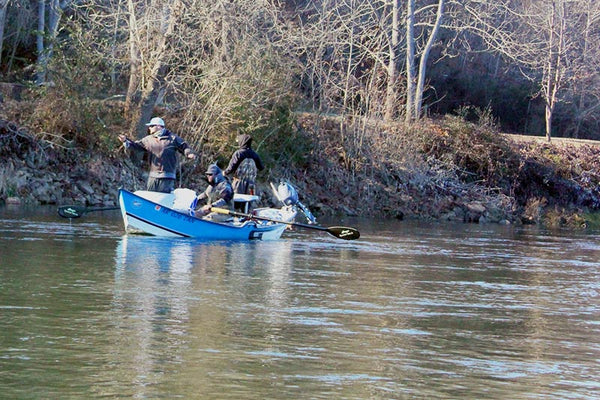
Backhand cast from the gunner's seat.
Outside the serious streamer world, the backhand cast is hugely unappreciated.
It’s a powerful technique, particularly advantageous for big flies and windy days. It will keep you and your boat companions safer, make your guide happy, and take less energy out of your arm.
Fly Tying: Why Is My Baitfish Pattern Swimming Wrong?
Never confuse a true backhand cast, where the final presentation comes on a back cast, with that casting instructor-endorsed, rod tip over the off-shoulder cast. It’s lazy and weak, even for nymphing. Don’t be that guy.
Here are 3 tips to make the back cast easier:
Rotate Your Feet
Start off facing the middle of the river, but turn to face the bank when you're stripping. Turn back for your next cast.
Aim
Aim your first cast toward the middle of the river and perpendicular or slightly upstream of your position in the boat, 180 degrees from where you are going to release the fly. Trying mid-cast aim improvements will draw blood.
Release Early
As you learn, try to stop the rod and release the cast slightly earlier and higher than normal. Yes, it will make it harder around trees, but it will negate the short crash landings we all go through until your timing and accuracy improves.
4. Stay Out of the Trees
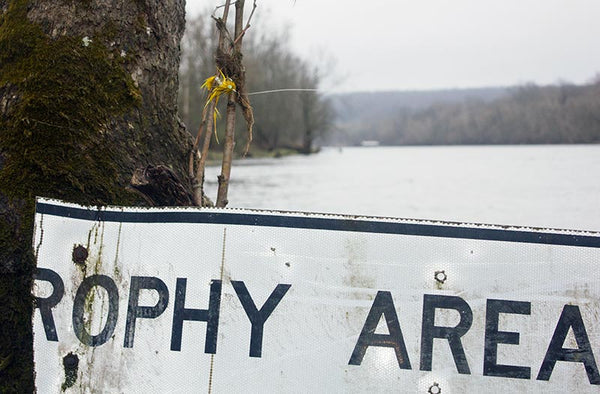
We all find the trees sometimes.
Well, try.
Sometimes we all get it wrong when firing it in tight. Minimizing the frequency of those moments and knowing how to get your fly out again without assistance is money as far as the rower is concerned.
Play the percentages and if you think the risk is too high, wait for a better shot. Feather line through your stripping hand on the release, rather than letting line sail willy-nilly. If you need to abort, clamping down before you hit a tree is easy. More practiced players can use this to plant their flies with precision.
If you do plant your fly in a tree, don’t cuss at it, don't look at the rower as though it’s their fault, or, worst of all, don't keep mum about the whole incident until you're into the backing. Be a grown up and try to fix your own mistake.
3 Articulated Streamer Fly Styles That Simply Get ‘Er Done
If you strip your line up tight fast, the drag of the current will snug those knots tight. Raising the rod tip and starting with gentle to moderate pressure can often make the fly reverse its course.
If it’s stuck hard, leave a small belly of slack in the line and wave the rod tip short and hard strokes side to side. Something in the wave frequency seem to extricate flies better than an up down motion.
After everything is done, apologize and thank the rower, and mean it – he was the one getting punished rowing you back upstream and holding the boat steady while you extricated the fly, or worse, left an hour of his life in the tree.
5. Select the Right Flies

Ready for action.
Streamer selection should be put together on size, action, color, and depth.
Size
Getting serious about streamer fishing will mean several fly boxes, depending on the prey species.
The small stuff, 1” to 2”: Fish-Skull® Super Buggers™, Sparkle Minnows, Kreelexes, Zonkers, and Fish-Skull® Skulpin Bunnies™.
The 3” to 5” flies: Galloup’s Fathead Dungeons, Zoo Cougars, Circus Peanuts and the like.
The bigger stuff, 6” and up: Michael Schmidt’s Double Deceivers, Lynch’s Drunk and Disorderly, and my own LapDancer.
The big stuff works in way more places than most people think.
Action
There are plenty of flies that can go up and down in the water column (just add some lead eyes) and plenty with articulation that wiggle their booty. You need both.
Fly Tying and Beer: 4 Essential Streamer Pairings To Maximize Your Mojo
Now look at lateral movement: Fatheads, Zoo Cougars, Drunk and Disorderlies, LapDancers and Double Deceivers.
Color
Yellow, olive, white, browns (ginger/tan/brown), gray, and dark-over-light combinations are first choice. You might add some crawdad orange in some fast sinkers. Black works but is impossible to track over most riverbeds.
Depth
Have a selection of color and action to work a variety of depths. As my head guide Chad Johnson says, bring flies to split the water column.
Upper column flies, with deer or foam heads, work well for shallow rivers, flooded grassbeds.
Deceivers and the like can be worked down on fast-sinking sinking lines.
But then there will be times you need lead eyes, Sculpin Helmets, or Baitfish Heads to make the flies drop hard. Don’t overdo it; add as much weight as you need, but overkill flies will just stay in your box.
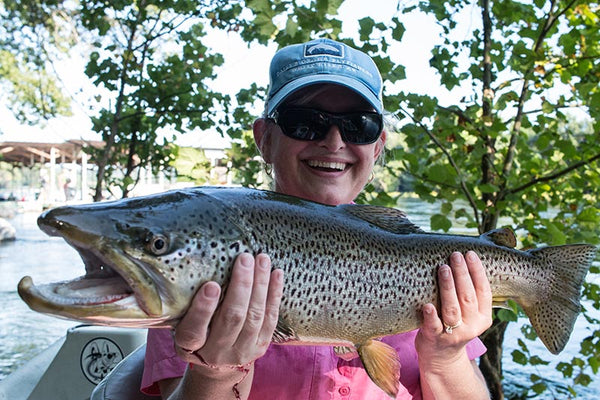
When all the stars align: Rabecca Dally 26.5" brown trout, August 2015.
Want More Articles Like This?
Subscribe to the Flymen Newsletter at the Bottom of the Page!
About Steve Dally:
 Steve is an Australian-born guide, writer, photographer, and fly tyer based on the big brown trout waters of the White River in Cotter, Arkansas, where he runs Dally’s Ozark Fly Fisher fly shop and guide service. He's a fly designer for Rainy’s Flies, a columnist with Australia and New Zealand’s premier magazine, Flylife Magazine. Check out the Ozark Fly Fisher Journal Blog and Steve’s Photography site.
Steve is an Australian-born guide, writer, photographer, and fly tyer based on the big brown trout waters of the White River in Cotter, Arkansas, where he runs Dally’s Ozark Fly Fisher fly shop and guide service. He's a fly designer for Rainy’s Flies, a columnist with Australia and New Zealand’s premier magazine, Flylife Magazine. Check out the Ozark Fly Fisher Journal Blog and Steve’s Photography site.


Excellent article, thaks for sharing.
i enjoy your blog
Great stuff… we never stop learning 🐟👍😊
Lots of information in there! great read!
From an aspiring streamer junky, I do say, damn good stuff, Sir.
Leave a comment